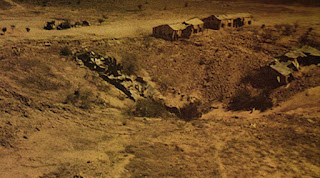POKHRAN II AND THE AFTERMATH
POKHRAN II AND THE AFTERMATH
Nikunja BIhari Sahu
The second nuclear test conducted by India on 11th May, 1998 in the Pokhran range of the Army in the deserts of Rajasthan stunned the world with its scientific supremacy and technological prowess. The series of five tests achieved their desired yields with minimal radioactive leaks and gave India the capability to build both fission and thermonuclear weapons with yields up to 200 kilotons sufficient to deter the enemy. This has several implications: Firstly, India entered the world's elite nuclear club as the sixth country after the USA, Russia, China, Britain and France establishing itself as a formidable power in nuclear technology. Secondly, the explosion came as an upshot of a well established scientific culture of research base with a legacy founded by Bhaba and Sarabhai. Fourthly, and most importantly, India demonstrated the perfection of its scientists and engineers in achieving mastery over the crucial technology reaffirming the fact that the country's achievements were based on years of well planned research and scientific base rather than being a clandestine one like that of our neighbouring countries.
To commemorate this landmark achievement, the Govt of India has declared May 11 as National Technology Day. In this context, it will be worthwhile to look back the sequence of events that led to the unfolding of the landmark incident on that historic day.
The landmark test was carried out under the leadership and supervision of Dr APJ Abdul Kalam, the then Head of DRDO and Prime Minister’s Chief Scientific Advisor and Dr R. Chidambaram, the then Chairman of India's Atomic Energy Commission. Special care was taken to maintain confidentiality so as to avoid the world's attention and the tests were given the code name Operation Shakti. Scientists, divided into small groups, assembled at the test site in army attires under different nicknames. Even their family members, relatives and top officials had no idea about their plan. To avoid the eyes of American spy satellites, most work was carried out at night and the equipment were brought back to the base camp before the day break to pretend as if there were no movement of machinery. Even the shafts dug in the sandy desert for placing bombs were covered with camouflage nets to match with the surroundings for deception. A special regiment in the Army's Engineering wing was created to execute the plan with utmost secrecy and diligence.
The nuclear devices were shifted from Mumbai to Jaisalmer airport by special Air Force planes and, from there, finally shifted to the test site by 4 trucks in 4 trips. The makeshift house in which the materials were kept was named as Prayer Hall to avoid publicity. The L shaped shafts into which the devices were lowered were given different code names like the White House, Taj Mahal, Kumbhkaran etc.
By the early afternoon of that day, the winds had died down and the test sequence was initiated. As per protocol, Dr. K. Santhanam of the DRDO, in charge of the test site preparations, handed over the two keys that activated the test countdown to Dr. M. Vasudev, the Range safety officer, who was responsible for verifying that all test indicators were normal. After checking the safety indicators, Dr Vasudev handed one key each to a representative of BARC and the DRDO, who unlocked the countdown system together. At 3:45 PM the three devices were detonated. Shortly after this, the then Prime Minister, Shri Atal Bihari Vajpayee announced in a press conference about the success of these tests.
The world reaction to this incident was strong and quick. Many countries including the USA, China, Pakistan, Japan and Canada condemned the tests and the United Nations felt that a regional nuclear arms race might be triggered. Sanctions were imposed by various countries on India on economic and scientific fronts.
However, India stood its ground and believed that the tests were necessary for making the country self-reliant in nuclear technology while maintaining the status of a responsible nuclear power nation.
Education Officer
Regional Science Centre
Bhopal
Phone: 8917637974
To read the same article published in the Central Chronicle dated 11.05.24, please click the following link :
https://drive.google.com/file/d/1ubvitR5bfMzaF2uBPBqBcx6jMrgQjtX6/view?usp=sharing
To read the same article published in The Orissa Post dtd 12.05.24, pl click the following link:
https://odishapostepaper.com/m/237910/663fcbbc9eebb
or
https://drive.google.com/file/d/1if5-GtjPjc-tuk2B0FLxP-Q-P-Jn-BQp/view?usp=sharing







Comments
Post a Comment